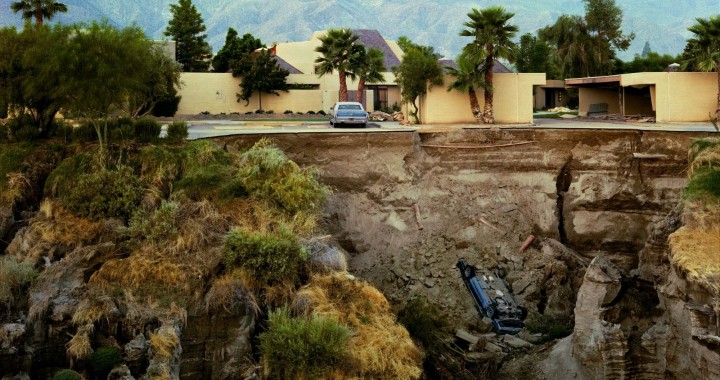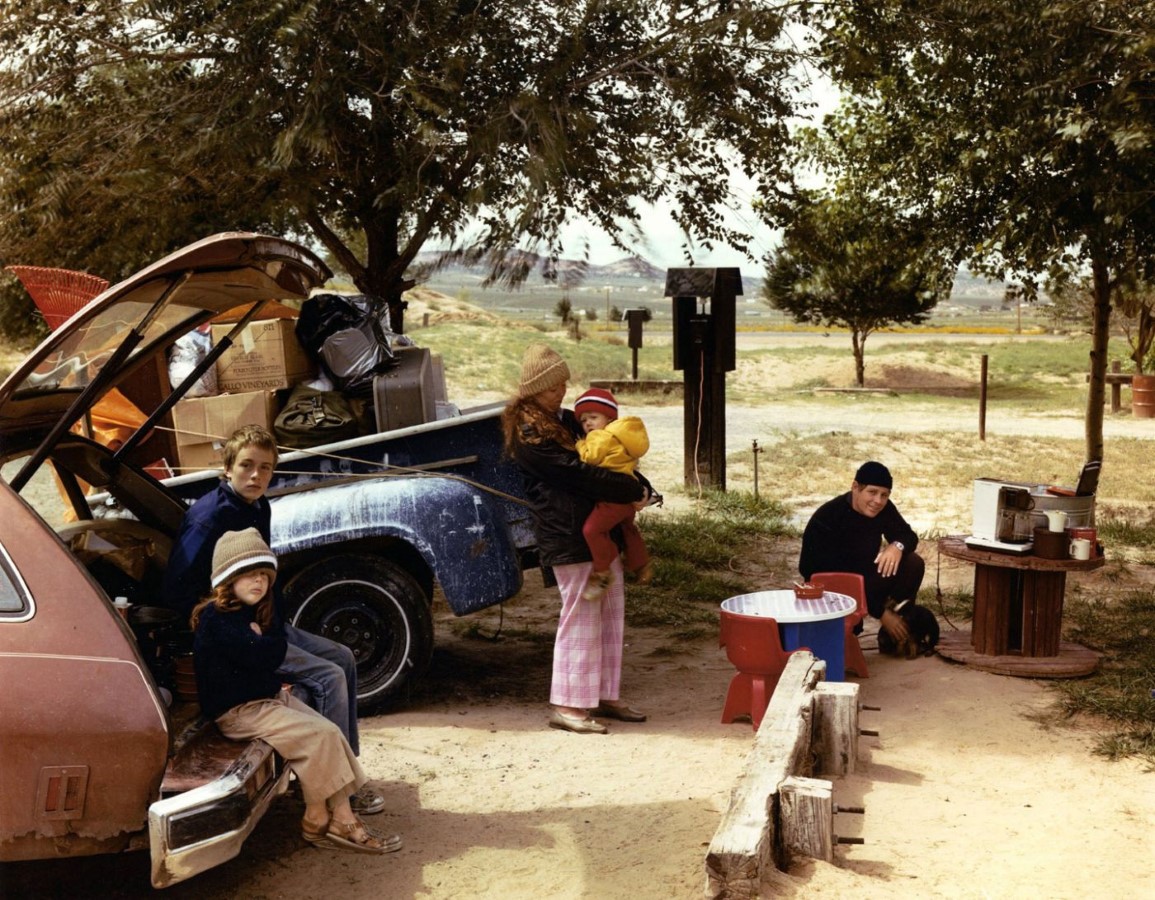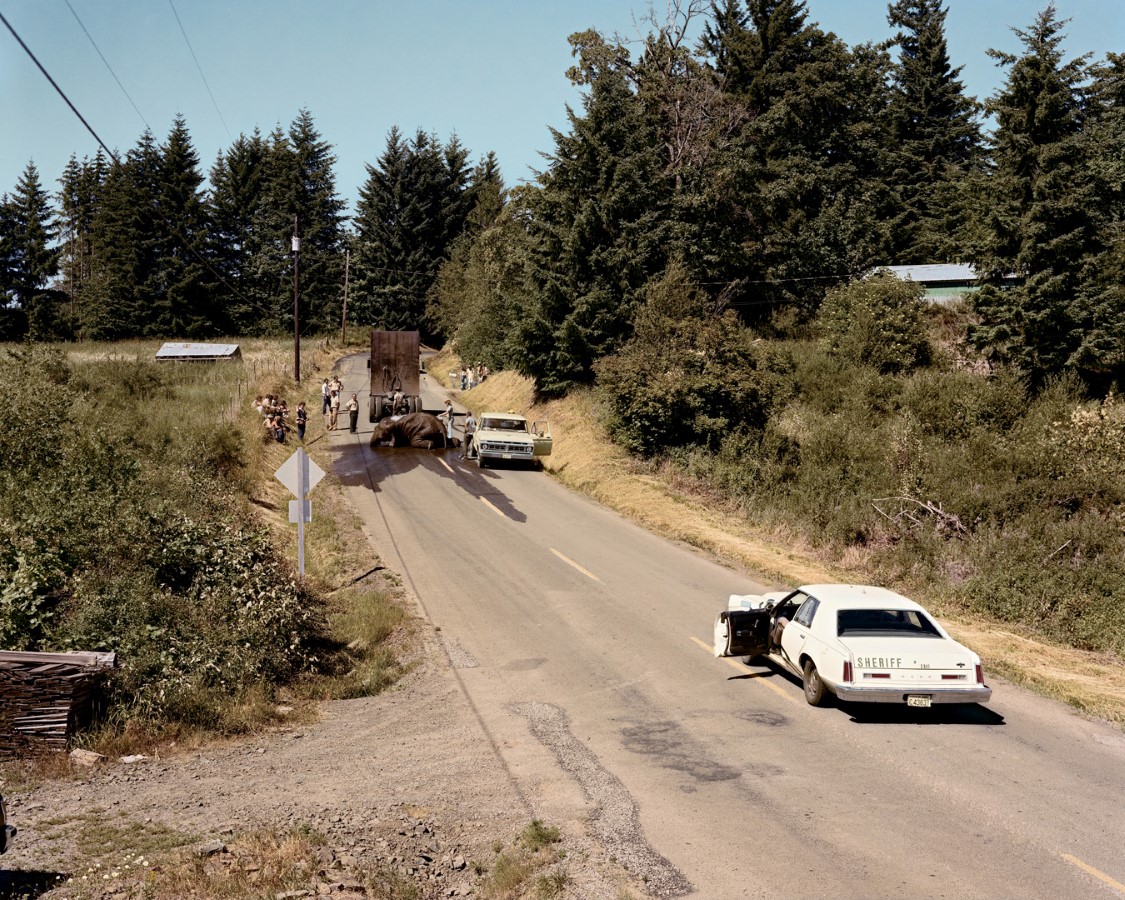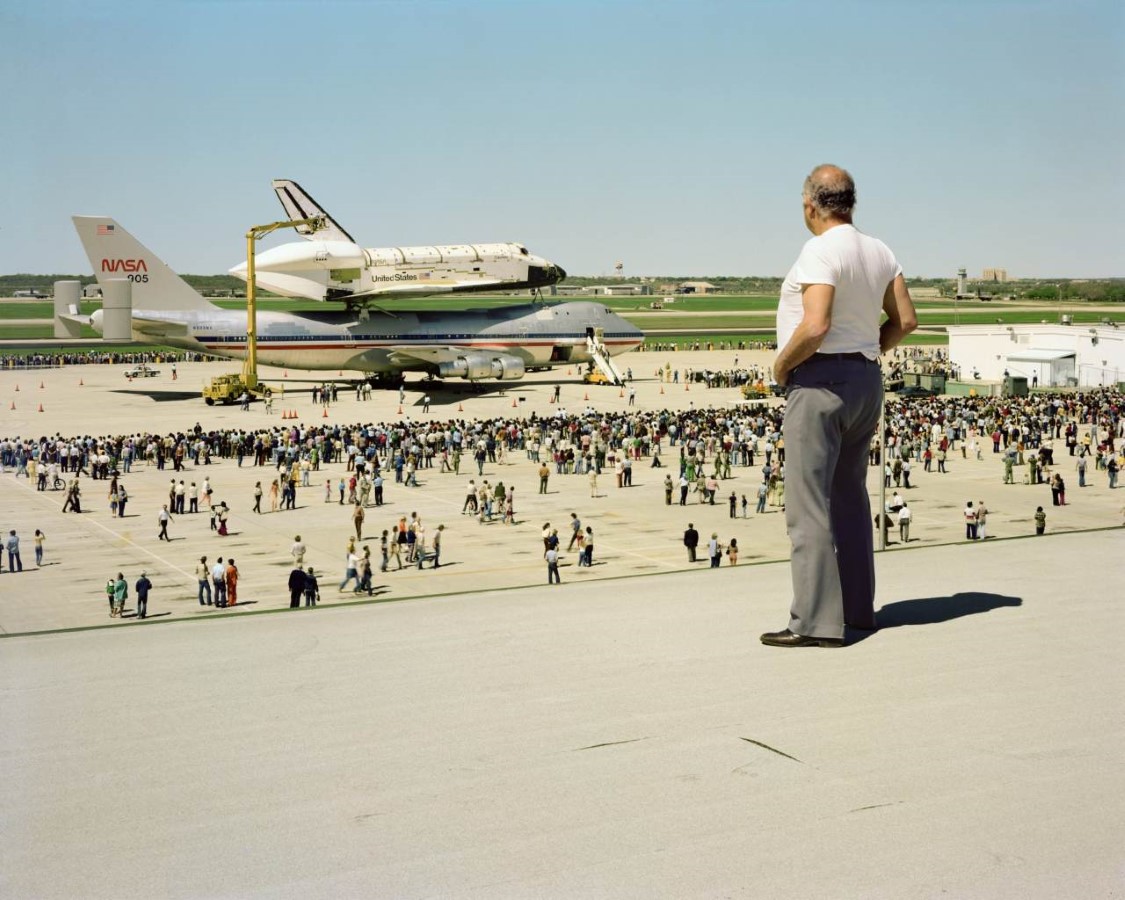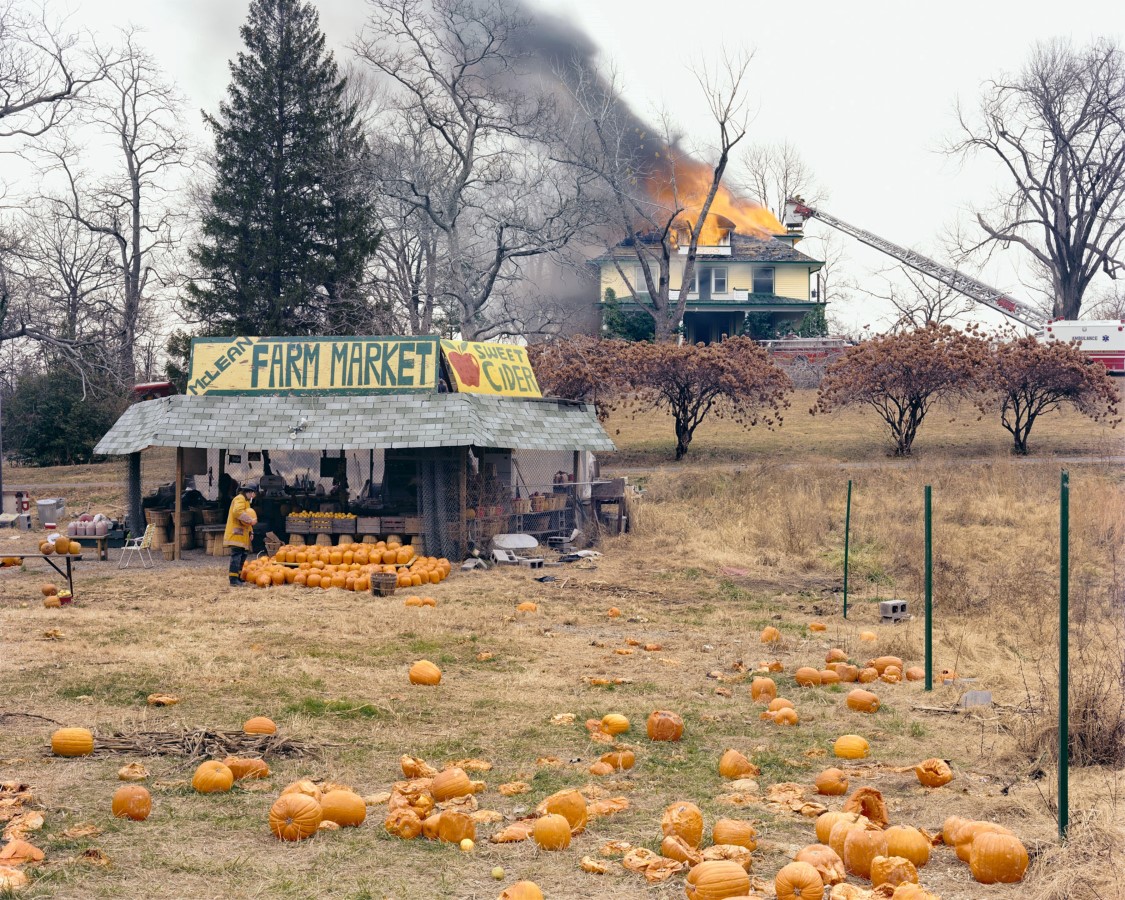It is about a country convinced of its independence and freedom, but that when photographed appears chained to a set of principles and dreams powerfully manifested in its architecture and in the lives its people have chosen to lead.
The Dreams of Some
By Paul Loomis, December, 2012
It is written in the Torah that God’s name cannot be spoken. The name’s banned status signifies the indescribable power of a God so great that one cannot draw close, and there is a related concept present in Joel Sternfeld’s American Prospects, something that is impossible to state directly but is definitely there. It is an unspeakable force, lurking invisibly, powerful, cultural, American.
This speechless quality is important because American Prospects isn’t about politics like some of its influences – Robert Frank’s Americans comes to mind – it is more about ineffable ills, and patterns of the everyday we try to forget. It is about a country convinced of its independence and freedom, but that when photographed appears chained to a set of principles and dreams powerfully manifested in its architecture and in the lives its people have chosen to lead.

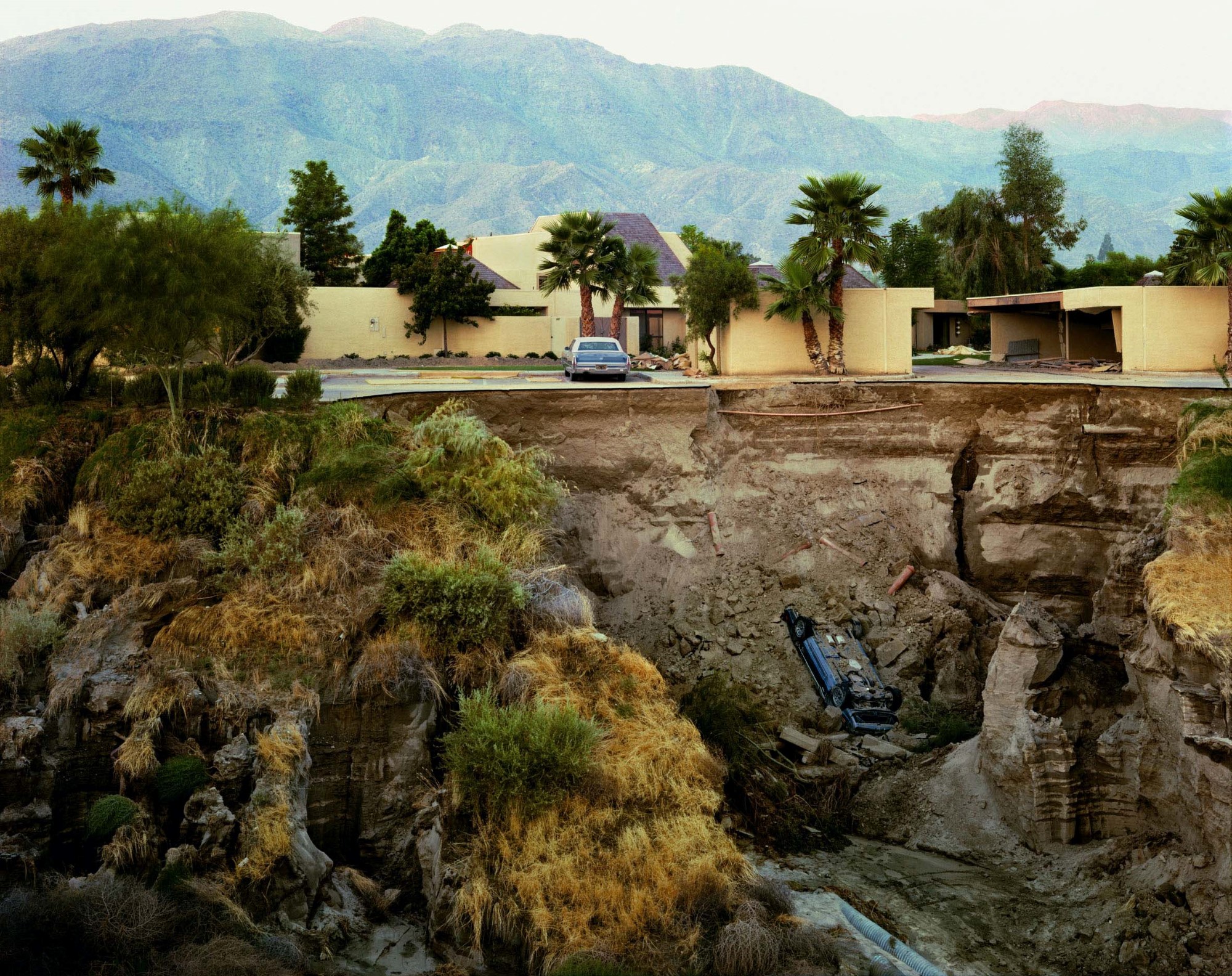
There is a lonely basketball goal in the desert, framed by gorgeous cliffs, a wet suburb under brooding skies, a pool littered with identical round floating objects beside which a man stands, his back to the camera, looking out over the desert beyond his house. There is a moose knee-deep in a marsh next to a virgin pine forest being photographed and admired by a dozen brightly dressed tourists, a pale woman posing in front of a trailer park with scrub-brush in the background. There are rocket ships at noon surrounded by acres of sand, and the wreckage left by disasters.
There is a man alone in his green suburban yard staring at the camera and holding a red child’s bicycle with an unhappy expression that seems produced by the very clarity the photograph brings to his situation. There is a sand box overrun with miniature earth movers in the undeveloped land behind a subdivision, a collapsed elephant on a rural road surrounded by officials. There is a fireman buying bright orange pumpkins while flames of the same hue consume a house in the background.
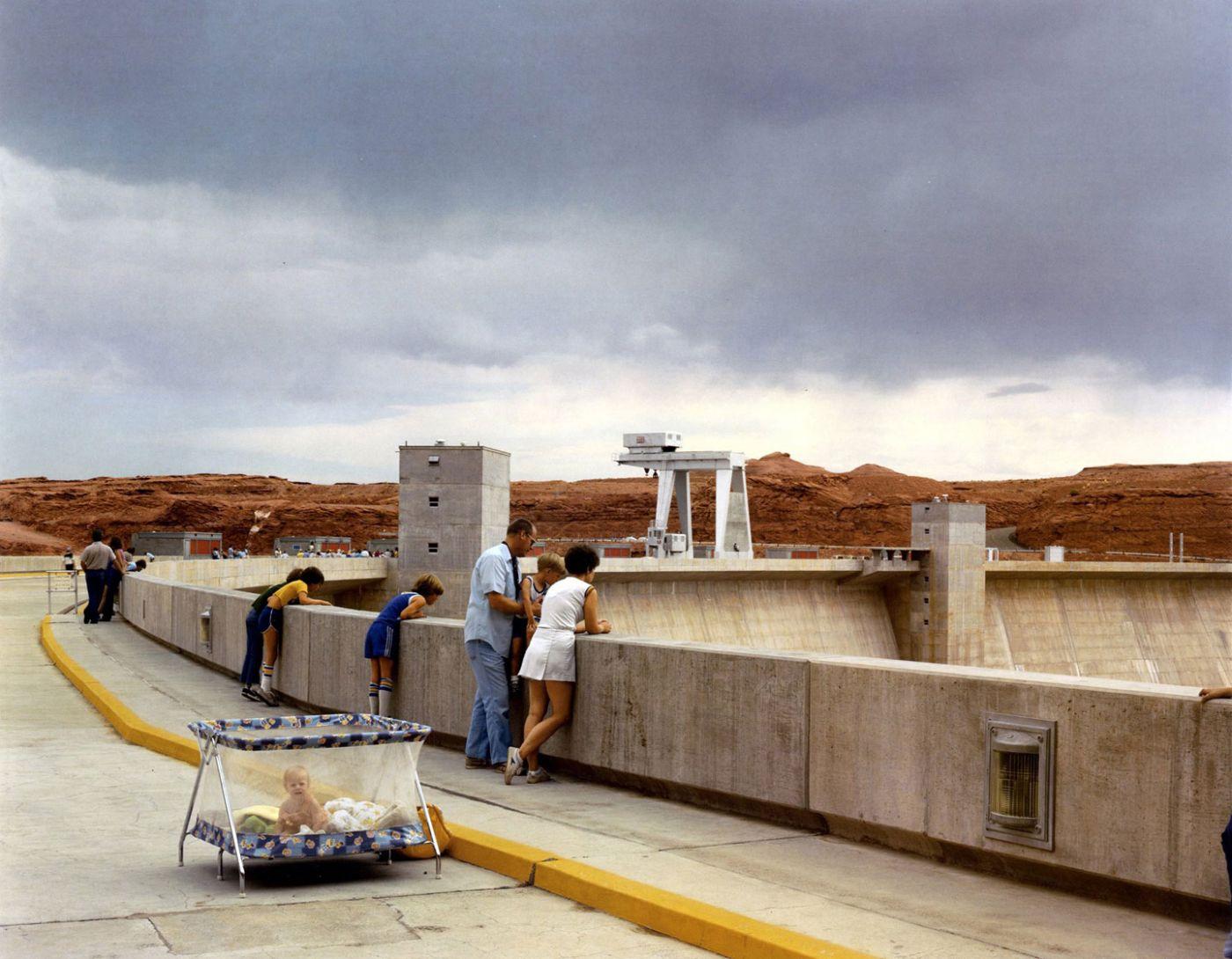
Glen Canyon Dam, Page, Arizona, 1983
Canyon Country, California, June, 1983
The subjects of these pictures are varied but the hand of the photographer persists throughout, providing a consistent perspective so that the book never once feels haphazard.
The subjects of these pictures are varied but the hand of the photographer persists throughout, providing a consistent perspective so that the book never once feels haphazard. That perspective manages to document the weird mixture of tragic boredom, achievement and hope that composes the contemporary American experience. The pictures are shot with a sort of attached indifference, meaning that the subjects, composition, and lighting are all carefully chosen, but a documentary quality establishes distance between viewer and subject. This space allows a feeling of wrongness to come through, one that seems to permeate these photographs, not by direct instigation but through an implicit voyeurism. The wrongness is as apparent as its source is difficult to identify, so that looking at these pictures is similar to watching a David Lynch film.
Underneath what the camera is showing you, not to the left or right, but beneath the American lives that you see, there is something sinister at work. Like Lynch, Sternfeld never shows us what that thing is, but in the suburbs brushing against farmland, the forlorn tennis players and cities sprouting out of the desert, there is a visible tension between Americans’ lust for freedom and their need for order. This struggle is most apparent in the suburbs (which are well represented in this book) where a desire for the freedom of land and independence produces a crushing uniformity.
That need for freedom, and the quest to realize it, is represented too by nature, which, in these photographs, humans are constantly invading and destroying, either in person while trying to commune, or with machines and ambition.
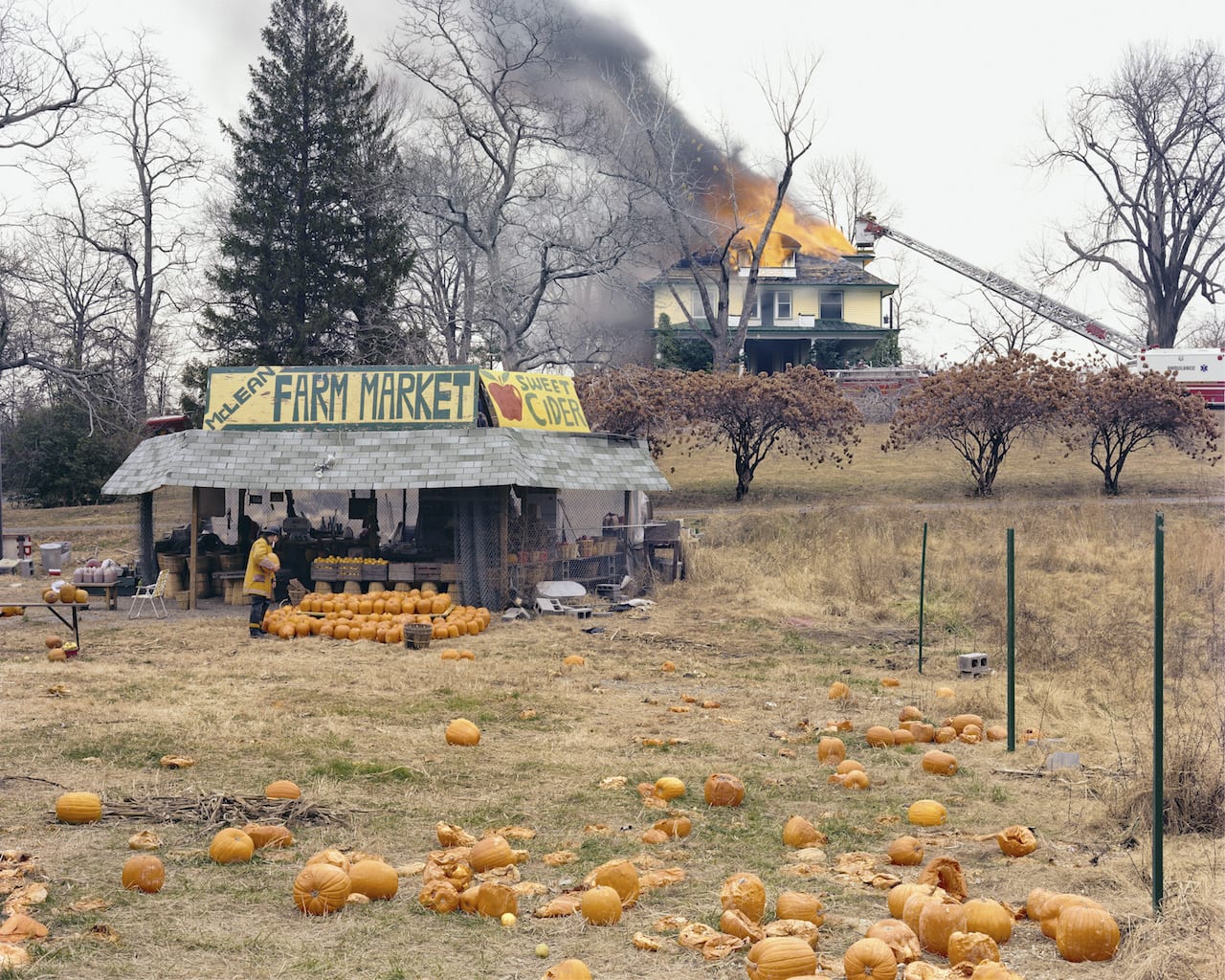
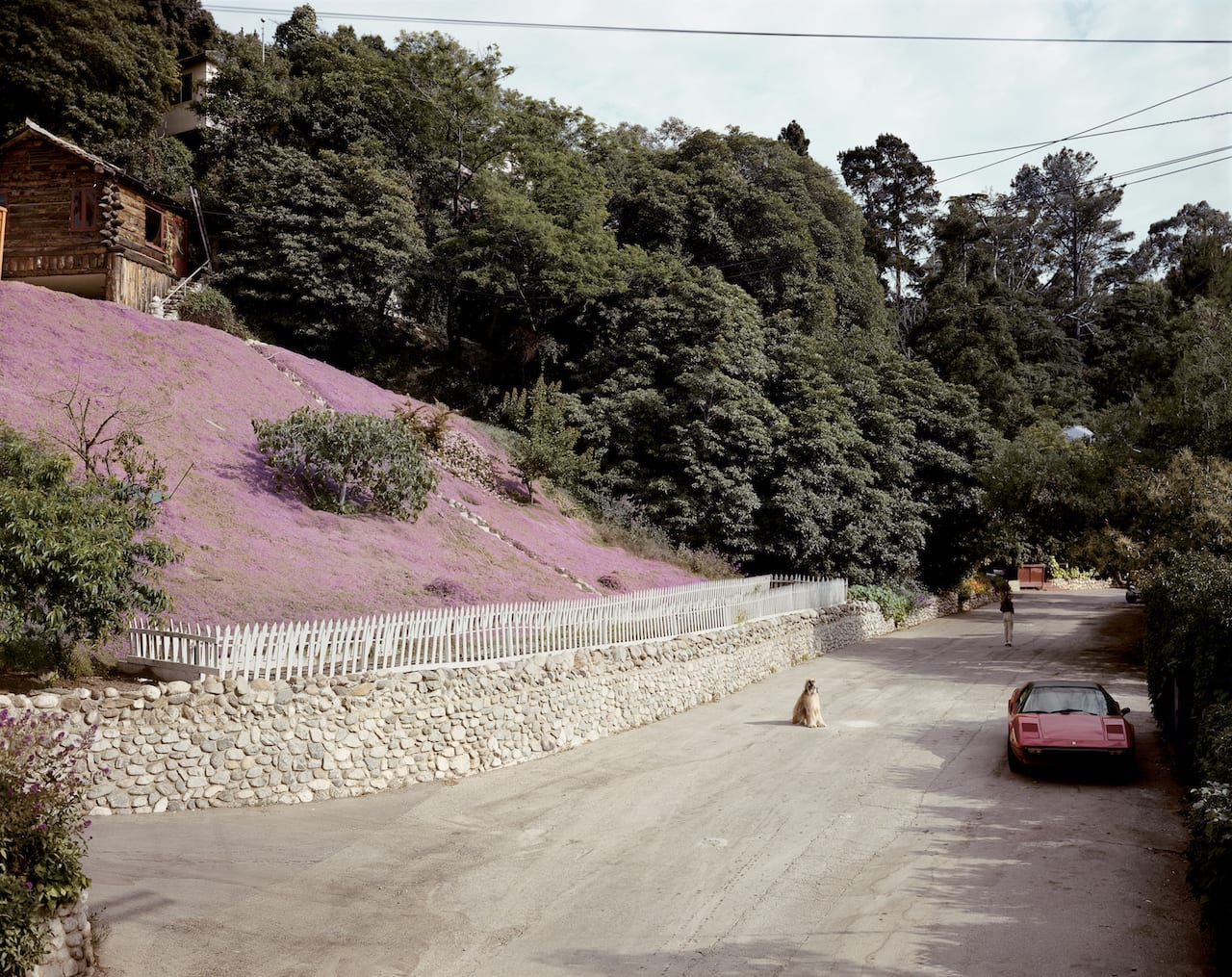

A striking number of disasters populate the pages of American Prospects, and several of them beset respectable subdivisions. Those photographs in particular seem to dramatize the impossibility of fulfillment, of happiness, by showing the collapse of an architecture that attempts to actualize those dreams. In Prospects, order achieves temporary success in the suburbs but the cost is boredom and underlying pathology. When disaster strikes pathology drives it, rendering suburban order irrelevant.
The most distinct feeling in American Prospects may be expanse. The United States is an enormous country loaded with promise and failure, and this book documents dreams, landscapes, and destinations with startling clarity. The strongest impression is of a country possessed of incredible wealth and technical proficiency that, although produced by organized ambition, is un- or mis- directed and seems to magnify an essential lostness that is important to the Americans in this book. In every photograph there is an undeniable desolation that is tied to the country’s values and the self understanding it gives its citizens.
American Prospects is beautiful and uncomfortable and completely worthwhile. A tour de force of American photographs, it follows in the tradition of Robert Frank and Stephen Shore by radically re-imagining the contemporary American scene. Its author deserves every bit as much respect.
Paul Loomis writes for ASX and graduated from the University of North Carolina at Asheville in 2011 with degrees in Ecology and Creative writing. He has lived in North Carolina, California, Ohio, The Netherlands, and the forests of Appalachia. He currently resides in Mexico City, writes fiction and non-fiction, and teaches Chemistry and Literature. He can be contacted here: tetra.loomis@gmail.com
Photographs by Joel Sternfeld. DAP, 2012.
ISBN-13: 978-1935202974
ASX CHANNEL: JOEL STERNFELD
(All rights reserved. Text @ Paul Loomis, Images @ Joel Sternfeld)
